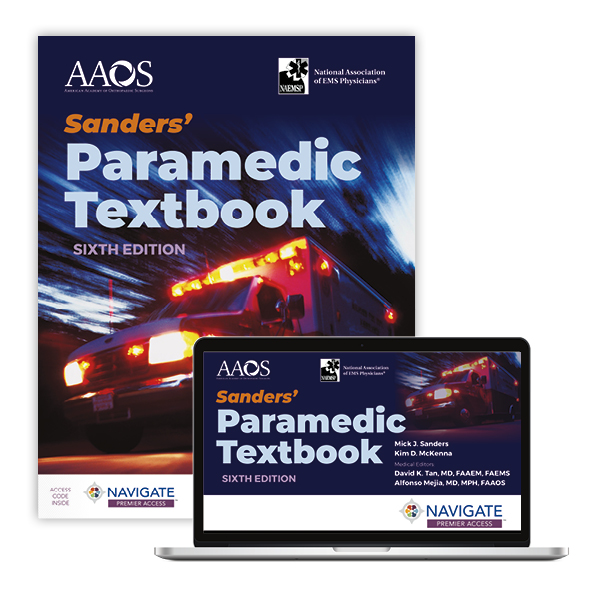Addressing Bias in Prehospital Pain Management: A Call to EMS Educators

![]() Pain management is a critical aspect of emergency medical services (EMS) education. However, there are significant disparities in how pain is managed among EMS clinicians. These disparities have a profound impact on patient outcomes and overall quality of care. Recent studies have shown that certain demographic factors, such as race, gender, and socioeconomic status, play a role in these disparities.
Pain management is a critical aspect of emergency medical services (EMS) education. However, there are significant disparities in how pain is managed among EMS clinicians. These disparities have a profound impact on patient outcomes and overall quality of care. Recent studies have shown that certain demographic factors, such as race, gender, and socioeconomic status, play a role in these disparities.
Public Safety Group sat down with Kim McKenna, PhD, CEN, RN, EMT-P, co-author of Sanders’ Paramedic Textbook, Sixth Edition, to discuss why bias occurs when it comes to prehospital pain management, and how EMS educators can address these biases in the classroom.
Identifying the Factors Contributing to Disparities in Pain Management
Research has demonstrated that women and people of color are more likely to receive inadequate pain management compared to their counterparts, McKenna says. This suggests that unconscious biases and stereotypes may contribute to these disparities. It is crucial for EMS educators to understand the impact of these disparities in order to address them effectively.
“We know that in healthcare, things haven’t always been socially equitable,” McKenna says. “There’s an emerging body of research that shows that patients who are not white are not getting the same care as other patients.”
Several studies have highlighted the factors that play a role in the disparities observed. One study found that black patients were 60 percent less likely than white patients to receive pain medicine.
“If we don’t give them pain medicine in the pre-hospital setting, the mean time that they’re going to get analgesia in the ER is about 60 minutes,” McKenna says.
McKenna says it is not uncommon for EMS personnel to defer responsibility for pain management to the ER. “That’s really not good patient care,” she adds.
The Role of EMS Educators in Addressing Pain Management Disparities
EMS educators have the power to influence future EMS practitioners and shape their understanding of equitable pain management. By incorporating education on disparities, unconscious biases, and cultural competency into EMS training programs, educators can empower students to provide equitable pain management to all patients, McKenna says.
“We all have bias, it’s as natural as breathing,” McKenna says. “It’s very important to recognize these biases and not let it interfere with patient care.”
In addition to recognizing biases, McKenna says that it’s important for educators to teach EMS learners that bias may be happening even when they are not leading a response call.
“They need to learn how to speak up,” she says. “How to have those difficult conversations when they see it might be interfering with the care of a patient.”
One area where educators can be proactive in the classroom is setting up appropriate scenarios and simulations, McKenna says. McKenna calls this the “hidden curriculum.”
“Who are your patients? How are you portraying patients?” she says. “Hopefully you have manikins with different skin colors. Hopefully you have live simulated patients you can use that are not all white, that maybe speak another language.”
Sanders' Paramedic Textbook, Sixth Edition
Featuring current print and digital content, engaging illustrations and photos, and accessible technology, Sanders' Paramedic Textbook, Sixth Edition with Navigate Advantage Access resources spur critical thinking for paramedic students and provide a must-have reference for emergency physicians.
Instructors: Request More InformationStrategies for Closing the Gap in Pain Management
Closing the gap in pain management requires a multifaceted approach. One strategy is to enhance diversity and representation among EMS educators to reflect the diversity of the community the EMS agency serves. By recruiting educators from diverse backgrounds, EMS programs can foster an inclusive learning environment that promotes equity in pain management.
Additionally, ongoing professional development and continuing education opportunities can help EMS educators stay updated on the latest research and best practices in pain management. By staying informed, educators can incorporate evidence-based approaches into their teaching and support the ongoing improvement of pain management practices. Resources include:
By implementing these strategies, EMS educators can work towards closing the gap in pain management and ensuring equitable care for all patients. It is also important for EMS educators to regularly assess their own biases and reflect on their teaching practices. By engaging in self-reflection and seeking feedback from students, educators can continuously improve their approach to pain management education and ensure they are providing an equitable learning experience for all.
Related Content:
